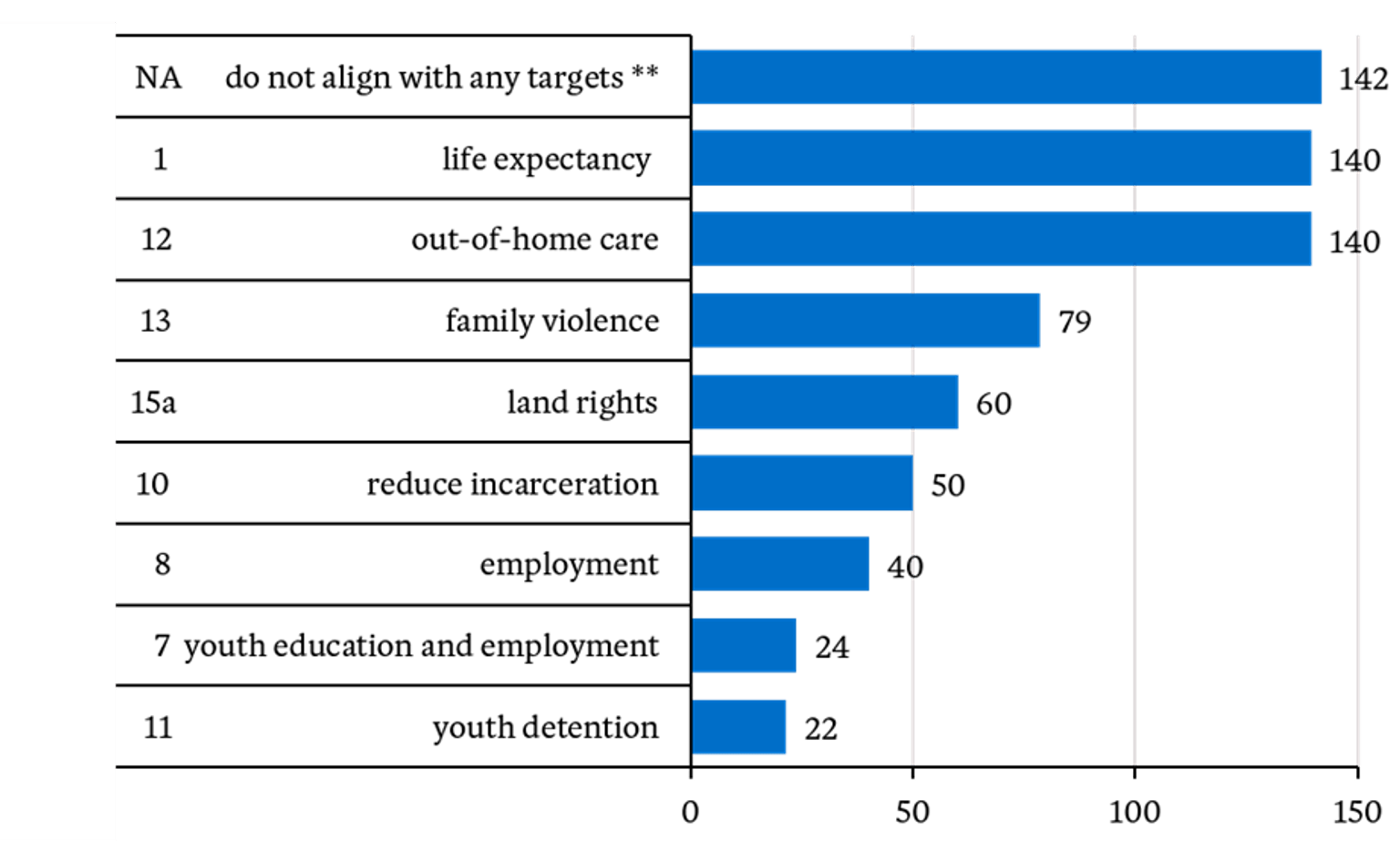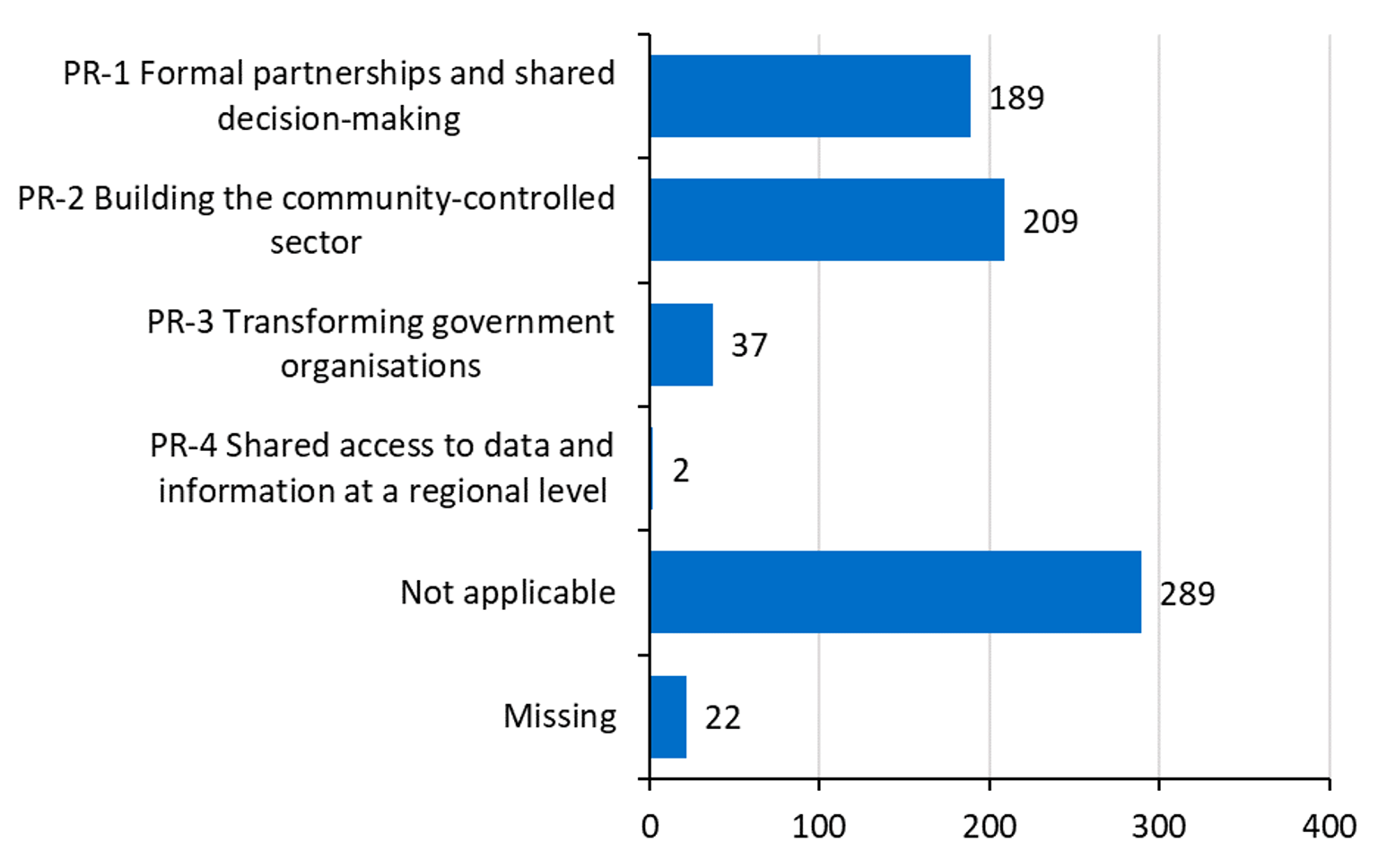Expenditure by Closing the Gap target
Departments were asked to allocate expenditure to the 19 Closing the Gap targets.* Where programs supported multiple targets, departments chose the target that best aligns with the program’s objectives.
There is significant variance in the size of expenditure by different Closing the Gap targets. Targets that align with Health, and Families, Fairness and Housing have higher expenditure. For example, expenditure is highest for Life expectancy (Health) and Out-of-home care (Families, Fairness and Housing).
$606M (81%) of the $747M targeted expenditure was attributed to a Closing the Gap target.
$142M (19%) is not allocated to a target, including:
- $43M that supports Closing the Gap Priority Reforms
- Internal operating costs for Premier and Cabinet and Energy, Environment and Climate Action
- Funding for the Korin Korin Balit-Djak system transformation (Families, Fairness and Housing)
- Stolen Generations Reparations Payments (Justice and Community Safety).
* Note that costs have been allocated to Closing the Gap targets but not to the Closing the Gap outcomes.
Detailed breakdown – expenditure above $20M (1/2)
For Closing the Gap targets with more than $20M of expenditure in FY22/23:
- The targets with the highest expenditure are for out-of-home care, life expectancy, and family violence. In total these make up $358M of the $747M (48%).
- Life expectancy ($140M) expenditure included the following large programs:
- Aboriginal cultural safety grant - hospital activity ($30M)
- ACCO services – primary health ($25M).
- Out-of-home care ($140M) is primarily delivered through ACCOs. Large individual projects contributing to this total include:
- Intensive Family Services and Preservation and Reunification Response ($29M)
- Cultural plans, Aboriginal Family Led Decision Making and Aboriginal Children in Aboriginal Care ($25M).
Detailed breakdown –expenditure above $20M (2/2)
For Closing the Gap targets with more than $20M of expenditure in FY22/23:
- Growth in expenditure by target reflects the growth in targeted expenditure by departments. Targets related to Families, Fairness and Housing have grown by relatively large amounts:
- Out-of-home care targeted expenditure increased from $87M in FY19/20 to $140M in FY22/23 (+$52M).
- Family violence targeted expenditure increased from $36M in FY19/20 to $79M in FY22/23 (+$43M).
- Expenditure relating to the life expectancy target grew from $102M in FY19/20 to $140M in FY22/23 (+$38M).
Detailed breakdown – expenditure below $20M (1/2)
For Closing the Gap targets with less than $20M of expenditure in FY22/23:
- Two had expenditure less than $1M:
- Target 17 – digital inclusion
- Target 15b – sea rights.
Detailed breakdown – expenditure below $20M (2/2)
For Closing the Gap targets with less than $20M of expenditure in FY22/23:
- As expected, given the overall growth in expenditure, many targets show a similar growth trend.
- Targets with little or no growth include:
- Tertiary qualifications
- Year 12 qualifications
- Suicide.
Priority reforms
The National Agreement on Closing the Gap is underpinned by four Priority Reforms. Where possible, FY22/23 expenditure was allocated to the Priority Reforms as follows:
- $189M for PR-1 Formal partnerships and shared decision-making
- $209M for PR-2 Building the community-controlled sector
- $37M for PR-3 Transforming government organisations
- $2M for PR-4 Shared access to data and information at a regional level.
$311M of $747M (42%) of expenditure could not be allocated to a Priority Reform. Included is expenditure that was ‘Not applicable’ ($289M) and where Priority Reform information was missing ($22M).
- This includes $139M from Health, who advised ‘…priority reforms are akin to system-wide levers. As such, all Aboriginal Health programs consider and address these, but are not solely targeted at one priority reform.’
Updated



